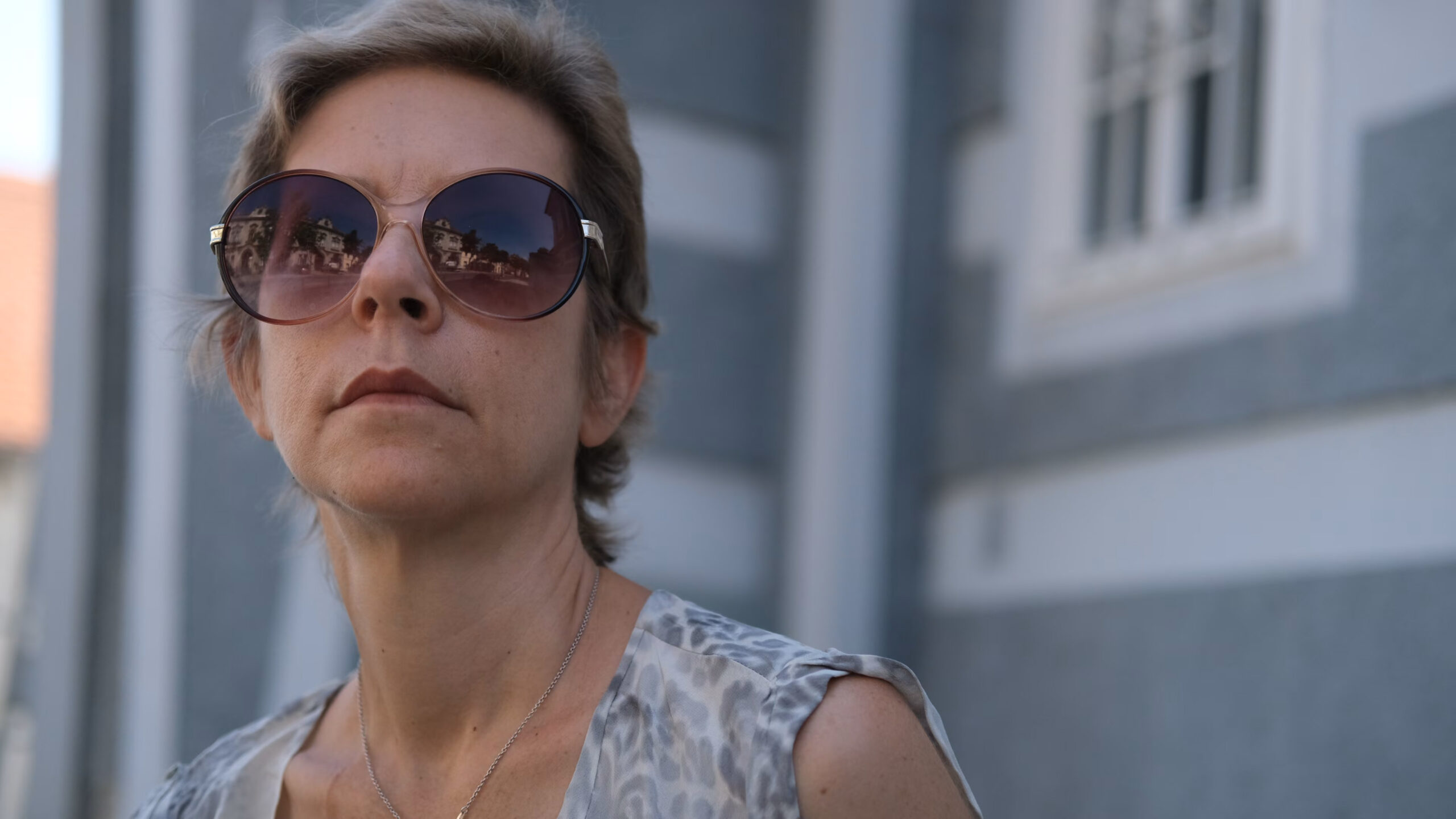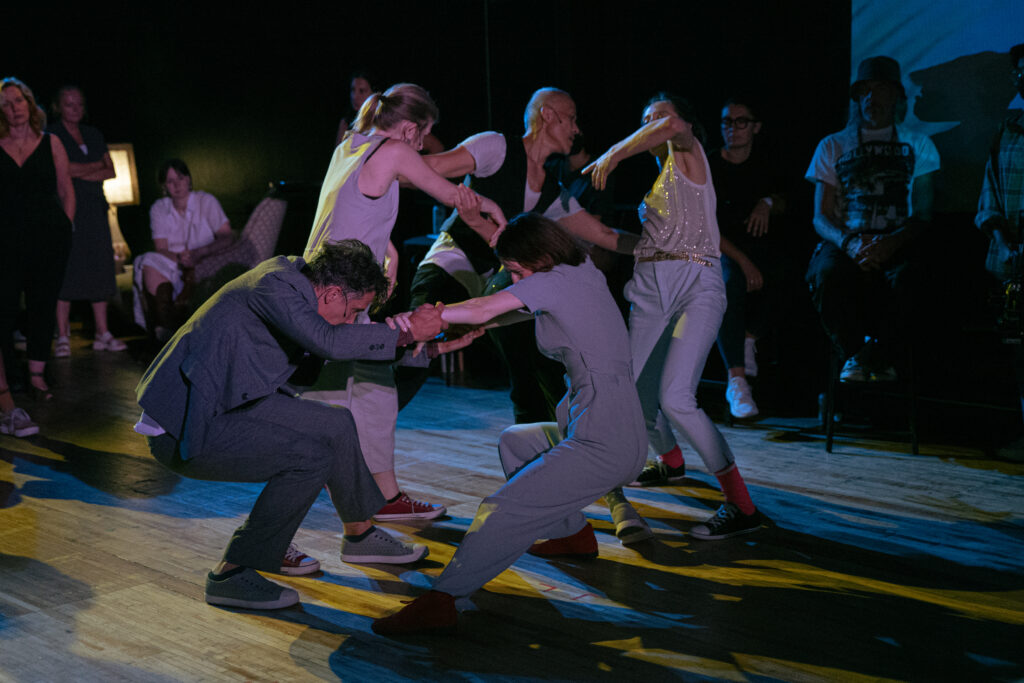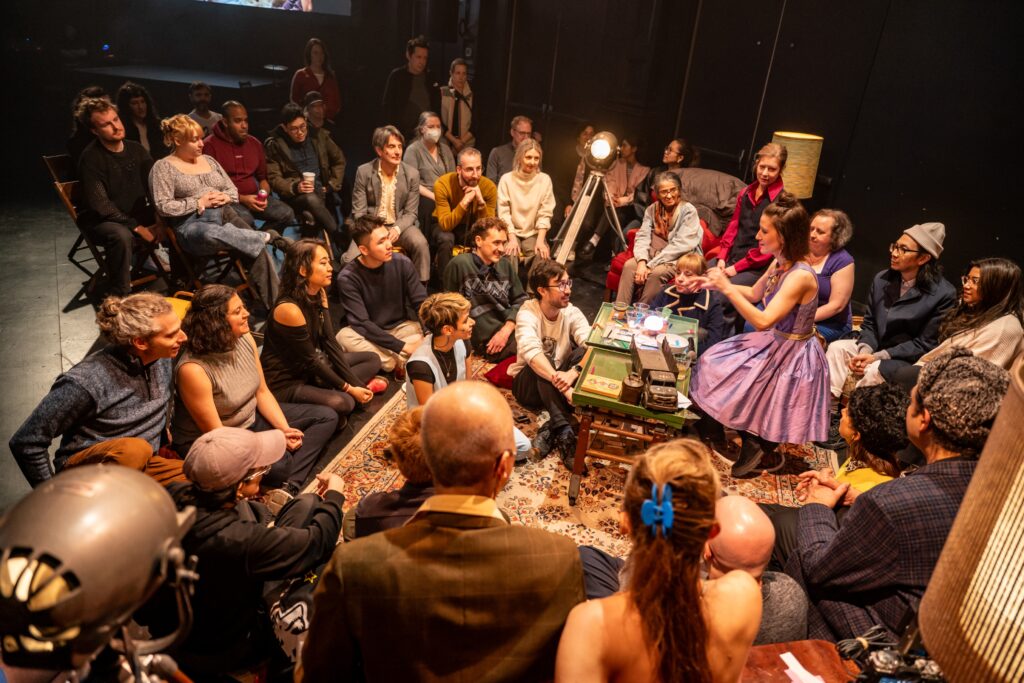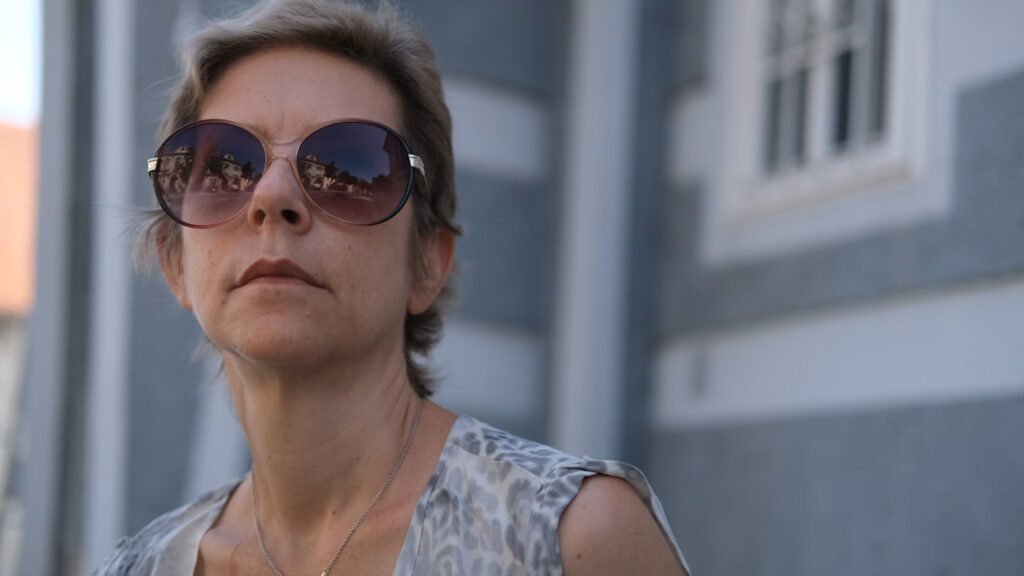

Photo by Francesca Chudnoff
Theatre Centre/Game of Life, created by bluemouth inc., Elephant (Franco Boni Theatre), Lucy AI (Gallery), Theatre Centre, closes Mar. 29.
The good news is that the internationally acclaimed Canadian theatre collective bluemouth inc. is back in town with a world premiere. The bad news is they’re only at the Theatre Centre for three days before dashing off to New York for an extended run at La MaMa Moves! Dance Festival.
Their new piece is called Game of Life and has two parts, the live action Elephant and the interactive video installation Lucy AI.
The bluemouth inc. collective has been mounting one of a kind shows since 1998, and needless to say, this world premiere is vintage bluemouth.
Game of Life is wildly imaginative in concept and uniquely inventive in execution – in short, the work is experimental to the max and replete with bluemouth’s highly original fusion of theatre, dance, and technology which also seems to incorporate every other art form known to humankind. And of course, a bluemouth presentation is always immersive with the audience having a role to play in the production. Another bluemouth hallmark is their unusual performance spaces.
Background
Game of Life is one of the most intensely personal and courageous shows that bluemouth has ever mounted.
In 2018, bluemouth Core founder Lucy Simic was diagnosed with stage four Ros1 lung cancer which is always fatal after metastasising into the brain. This rare form of cancer affects younger women with little known history of smoking. By younger, I mean much younger than the usual sufferer of lung cancer. Simic was 49.
The wellspring of Elephant and Lucy AI was this devastating life changing diagnosis, and given the complexities of a bluemouth production, Elephant was five years in the making.
Elephant
Elephant, created by bluemouth inc., Franco Boni Theatre, Theatre Centre, closes Mar. 29.
The live show was created by bluemouth’s Core members, Lisa Humber and Mariel Marshall and Core founders Simic and husband Stephen O’Connell. Simic, O’Connell and Marshall appear in the show along with Tony Chong, Carol Prieur, Erum Khan and violinist Lindsay Hilliard.
Scenographer Patrick Lavender completely stripped everything out of the Franco Boni Theatre to take control of the space. His set consists of three groupings – a lounge area, an extremely long dining table, and a small wooden stage. There is an empty space in the middle, and two giant TV screens which follow the live action, filmed by videographer Jeremy Mimnagh who does yeoman’s duty in keeping up with the dramatic flow. Mimnagh also designed the abstract images that appear on the screens to mirror the zeitgeist.
Narrator Khan begins by telling us about a dinner party she was invited to by Marshall as a way of meeting new people. The other guests are the four other performers (as is the audience, but from a distance). There is also violinist Hilliard wandering in the background performing quite touching melancholy music.
What follows is a series of very clever episodes that either overtly or obliquely address the concept of death and its impact on those who are left behind.
The piece begins gently enough with random people participating in an amusing game devised by hostess Marshall called The Gamr of Life. Various topics are pulled from a hat, and people have to reveal personal details about themselves, for example, describing “the one who got away”, or answering “have you ever been caught between two relationships”.

Photo by Dahlia Katz
In fact, Elephant’s throughline are the series of games that call upon the audience to address personal issues, ideas or feelings.
In another diversion, the audience is encouraged to talk to someone they don’t know with instructions like “tell the story of your first job”, or “who taught you something important recently”, or “relate your favourite birthday memory”.
Later in Elephant, the audience must individually concentrate on a card with a single question on it such as, “are there conversations that bore you,” or “is there something you care about deeply that you wish others would too” or “how do you hope people will remember you after you die”.
There is also a physical component. Two people put palm to palm, with each touch producing a chord of music, and as more and more people touch palms, a veritable orchestra of sound fills the room. A validation of human intimacy, perhaps?
The reason I’m describing these immersive experiences in detail is because they encompass aspects of our personal thoughts, our feelings, or our day-to-day concerns, and that is the baseline of humanity, of living as it were – in contrast with someone in the room who is dying.
Interspersed between these benign audience undertakings are a series of shattering monologues and deeply emotional movement sequences performed by the six actors who are, unlike the audience, confronting death head on.
O’Connell begins this journey into darkness by suddenly breaking the friendly mood in the room by shouting “I don’t want Lucy to die”, jolting the audience into a grim reality. We can all see Simic sitting at the table while her husband pours out his words of despair.
Each time the audience is lulled back into another anodyne activity, we are, nonetheless, increasingly and painfully aware of the traumatic experience that Simic, O’Connell and their friends are going through.
Movement plays a big part in conveying that anguish. The image of shuddering distorted bodies. Prieur’s solo emulating a shutting down of life. A sequence where Simic begins within the group but is gradually left behind. But of equal importance is the fact that the six actors are also taking part in the audience activities. They are still anchored to life.

Photo courtesy of the artist

Photo by Dahlia Katz
And this is the brilliance of bluemouth inc. – the creation of a tremendously moving work where life and death are in sharp relief, constructed on a series of pleasant tasks set against emotional outpourings. Each sequence, whether light or dark, is original and sometimes even surprising. More to the point, as you go further into this theatre of contrast, you realize the show’s depth, its richness, and the thought-provoking questions it evokes.
Another bluemouth strength is heightening the dramatic arc with meticulously devised theatrical elements such as Deanna Choi’s melancholy’s violin music and her atmospheric soundscape co-designed with Michael Wanless, Mimnagh’s apt projections and video images, and the aforementioned Lavender’s clever set and lighting. In short, all aspects of a bluemouth production mesh seamlessly together.
It is Simic who ends the show with a heartbreaking monologue. Cancer interrupts her life, she laments. Cancer stay in the corner, she orders. And just as O’Connell had wondered what his life would be like without Simic, she also wonders about his life when she is gone, but the images Simic conjures up are hurtful, where O’Connell’s picture was one of grief.
But Simic also breaks the spell of melancholy that now pervades the room. She invites the audience to join her in a healing ritual, and Elephant ends with an explosion of joyous dancing to Sweet Dreams by the Eurythmics.
Game of Life is a clever title because we are all gambling that we will have good health, but sadly, sometimes we lose. Our fate is in the lap of the gods.
And the Elephant of the title? That’s the proverbial elephant in the room.
Lucy AI

Photo by Tony Chong
Lucy AI, created by David Usher and Reimagine AI, Gallery, Theatre Centre, closes Mar. 29.
David Usher’s Montreal firm, Reimagine AI, builds, and I quote, fully interactive virtual beings and personality-based AI-powered minds.
Usher is also a dear friend of Simic and shocked by the news of her cancer, suggested using his firm’s technology to create an AI visual archive of Simic’s life and career. The result is an astonishing interactive video installation where the audience can reach into Simic’s inner world.
On one wall are scenes of life with Simic’s voiceover commentary. The other three walls feature mostly images of Simic dancing – her first love. The visual component was created by Lavender (technical director), O’Connell (cinematographer), Simic (writer), E. Wilson Spiro (video designer) and Richard Windeyer (composer).
The voiceover video is broken into sections and in between, an ornate silver globe appears on the screen which begins the AI session with avatar Lucy. Her disembodied voice asks a question which anyone among the watchers can answer. “What does love mean to you” for example. More to the point, the audience can ask Lucy AI questions by pushing a memory button.
As said before, this interchange is designed for the audience to reach into Lucy Simic’s mind and memories.
Lucy AI’s answers tend to be philosophical or intellectual, but they can also be concrete, depending on the question.
As an example of the former, my friend asked Lucy AI what the difference was between loneliness and solitude. Her clever answer was quite lengthy but the core of it was that loneliness is unwanted while solitude is chosen. When someone asked what her favourite question was so far, she cited the loneliness/solitude one.
Lucy AI gave a concrete answer when I asked her why she had moved east from her home in Port Coquitlam. It contained all the logical reasons bundled around the pursuit of her art which was dance.
Lucy AI tries to generate a conversation by following her answer with a question. For example, Lucy and I had a lively discussion about the perils of AI and how it will affect the future. Every time I made a point she countered with a question and clearly would have kept on going had I not stopped.
I even got a dressing down from her. Lucy AI had alluded to a covid protest in an answer to a previous question, and when I asked if that meant that she was against vaccinations, Lucy AI snapped at me saying she was not going to answer that. When I later apologized, she told me not to sweat it. Both answers deserved the laugh they got.
In short, if one has never encountered an AI avatar before, it is quite an amazing experience. Lucy AI has an answer followed by a question for everything.
What is really satisfying , however, is the way the video installation informed the live performance.
We had learn things about Simic from her images and voiceover, so we knew a lot of information about her personal life, her marriage of 22 years, and her illness. That gave us a solid background to take to Elephant. As well, text from the video was repeated in Elephant, but spoken by different people, so we could appreciate the veiled meanings stemming from the different voices.
Another ah ha moment came when one realized the strong connection between the questions Lucy AI is asking, and the tasks set on the audience in Elephant. This relationship speaks volumes.
In other words, seeing the installation enriched the live performance that followed.
Epilogue
I felt a deep sorrow at the end of Elephant. Simic’s legacy will be the story of her life told through film, voice, and an AI avatar who can carry on a conversation.
And a final note. The sheer courage of Simic and O’Connell to fully open themselves up to the audience is a monumental undertaking. It is a testament to them as artists, and to their reverence for the healing power of their art.
(Elephant ticketholders can get into the video installation for free. For people who just want the AI experience, its pay what you can. The whole installation sequence runs about 90 minutes and is programed throughout the day).
